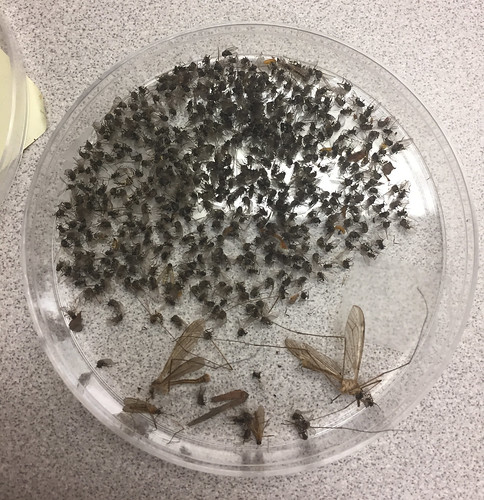Division of Ag asking public’s help to assess damage from buffalo gnat outbreak
April 17, 2018
By Mary Hightower
U of A System Division of Agriculture
Fast facts
- Buffalo gnat outbreak blamed in deaths of cattle, horses, deer
- Division of Ag asking public to help report gnat losses
- Report livestock losses to Kelly Loftin: 501-416-3684 or kloftin@uada.edu
(242 words)
Download Word version
FAYETTEVILLE, Ark. – Insect experts with the University of Arkansas System Division of Agriculture are asking the public for help as it works to assess the scope of losses due to the black fly/southern buffalo gnat outbreak in late March and early April.
Flooding along the White River helped make populations of the blood-sucking fly so dense in and around Arkansas County, they killed cattle, horses and deer and forced the closure of an Arkansas Game and Fish Commission nature center.

“We’ve heard reports of livestock and deer deaths, but we’d really like to have some reliable data for this outbreak for the sake of comparison,” said Kelly Loftin, extension entomologist for the University of Arkansas System Division of Agriculture. “Here’s where we need your help: If you lost cattle, horses or other livestock during this buffalo gnat outbreak, please let us know.”
Loftin said he’d like to know:
- Date of loss
- Number of animals lost
- Type of animal lost, whether cow, bull, horse, mule, etc.
- The county in which the losses occurred.
To report livestock losses due to buffalo gnats, contact Loftin 501-416-3684 or kloftin@uada.edu; or your local county extension office. Contact information for county offices is available at: https://uaex.uada.edu/counties/default.aspx.
Southern buffalo gnats, also known as black flies or turkey gnats, are ferocious blood feeders that develop in flowing water during late winter or spring. Southern buffalo gnat populations dramatically decline when temperatures rise to 80 degrees Fahrenheit or above. (See related story: http://bit.ly/2GxuKCr).
For more information about managing pests on livestock contact your county extension office or visit www.uaex.uada.edu.
About the Division of Agriculture
The University of Arkansas System Division of Agriculture’s mission is to strengthen agriculture, communities, and families by connecting trusted research to the adoption of best practices. Through the Agricultural Experiment Station and the Cooperative Extension Service, the Division of Agriculture conducts research and extension work within the nation’s historic land grant education system.
The Division of Agriculture is one of 20 entities within the University of Arkansas System. It has offices in all 75 counties in Arkansas and faculty on five system campuses.
Pursuant to 7 CFR § 15.3, the University of Arkansas System Division of Agriculture offers all its Extension and Research programs and services (including employment) without regard to race, color, sex, national origin, religion, age, disability, marital or veteran status, genetic information, sexual preference, pregnancy or any other legally protected status, and is an equal opportunity institution.
# # #
Media Contact: Mary Hightower
Dir. of Communication Services
U of A System Division of Agriculture
Cooperative Extension Service
(501) 671-2126
mhightower@uada.edu